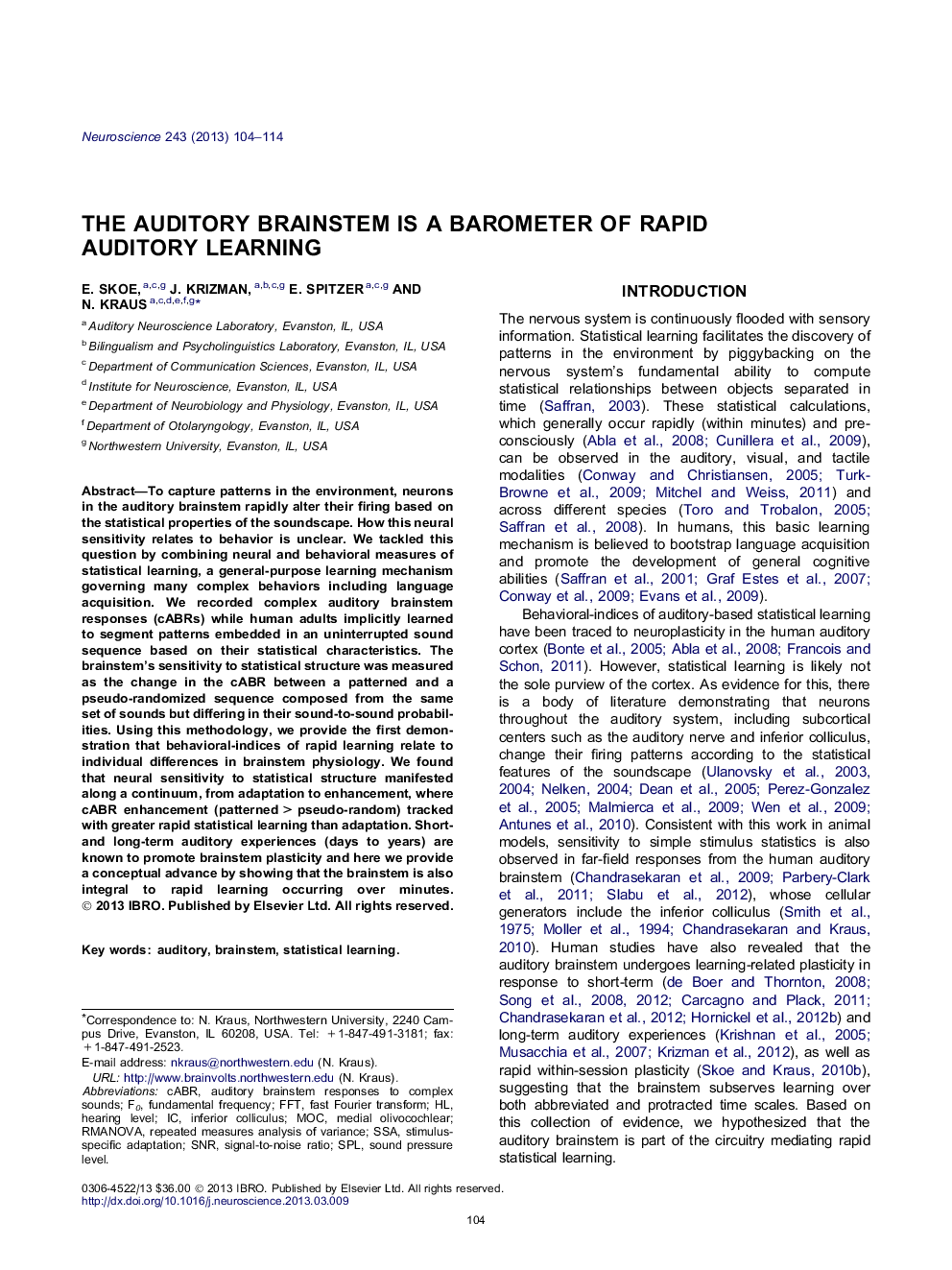| Article ID | Journal | Published Year | Pages | File Type |
|---|---|---|---|---|
| 4337996 | Neuroscience | 2013 | 11 Pages |
•Auditory brainstem is part of the neural circuitry mediating rapid auditory learning.•The brainstem’s sensitivity to patterns is observed within minutes of exposure.•Individual differences in statistical learning reflect individual differences in physiology.
To capture patterns in the environment, neurons in the auditory brainstem rapidly alter their firing based on the statistical properties of the soundscape. How this neural sensitivity relates to behavior is unclear. We tackled this question by combining neural and behavioral measures of statistical learning, a general-purpose learning mechanism governing many complex behaviors including language acquisition. We recorded complex auditory brainstem responses (cABRs) while human adults implicitly learned to segment patterns embedded in an uninterrupted sound sequence based on their statistical characteristics. The brainstem’s sensitivity to statistical structure was measured as the change in the cABR between a patterned and a pseudo-randomized sequence composed from the same set of sounds but differing in their sound-to-sound probabilities. Using this methodology, we provide the first demonstration that behavioral-indices of rapid learning relate to individual differences in brainstem physiology. We found that neural sensitivity to statistical structure manifested along a continuum, from adaptation to enhancement, where cABR enhancement (patterned > pseudo-random) tracked with greater rapid statistical learning than adaptation. Short- and long-term auditory experiences (days to years) are known to promote brainstem plasticity and here we provide a conceptual advance by showing that the brainstem is also integral to rapid learning occurring over minutes.
